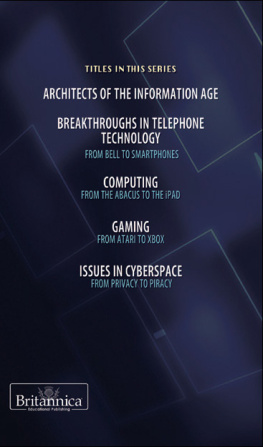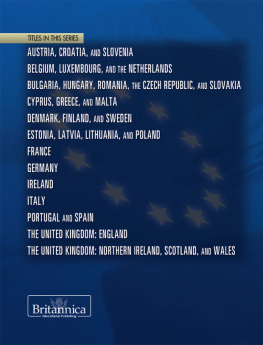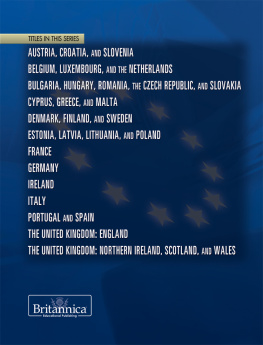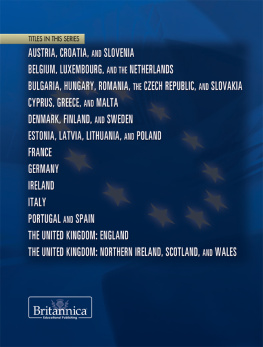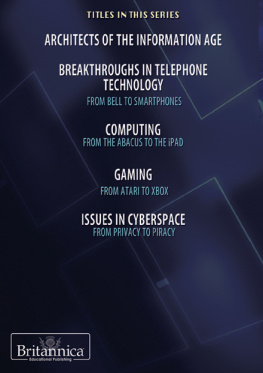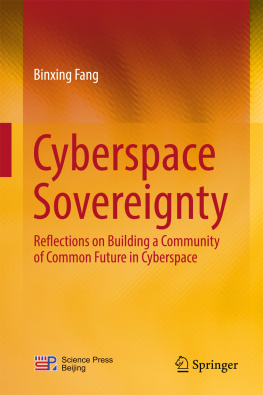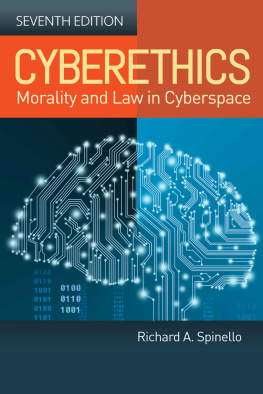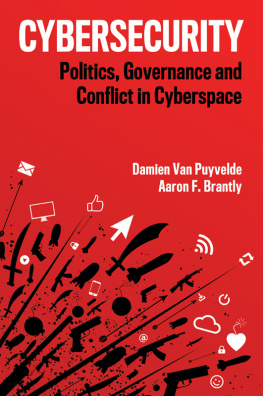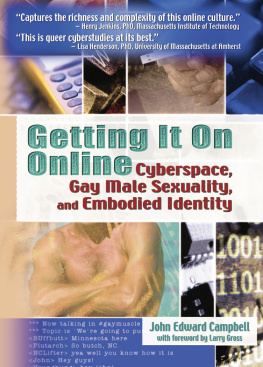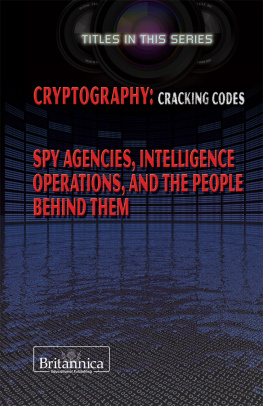ISSUES IN
CYBERSPACE
FROM PRIVACY TO PIRACY
COMPUTING AND CONNECTING IN THE 21ST CENTURY
ISSUES IN
CYBERSPACE
FROM PRIVACY TO PIRACY
EDITED BY ROBERT CURLEY, MANAGER, SCIENCE AND TECHNOLOGY

Published in 2012 by Britannica Educational Publishing
(a trademark of Encyclopdia Britannica, Inc.)
in association with Rosen Educational Services, LLC
29 East 21st Street, New York, NY 10010.
Copyright 2012 Encyclopdia Britannica, Inc. Britannica, Encyclopdia Britannica,
and the Thistle logo are registered trademarks of Encyclopdia Britannica, Inc. All
rights reserved.
Rosen Educational Services materials copyright 2012 Rosen Educational Services, LLC.
All rights reserved.
Distributed exclusively by Rosen Educational Services.
For a listing of additional Britannica Educational Publishing titles, call toll free (800) 237-9932.
First Edition
Britannica Educational Publishing
Michael I. Levy: Executive Editor
J.E. Luebering: Senior Manager
Adam Augustyn: Assistant Manager, Encyclopdia Britannica
Marilyn L. Barton: Senior Coordinator, Production Control
Steven Bosco: Director, Editorial Technologies
Lisa S. Braucher: Senior Producer and Data Editor
Yvette Charboneau: Senior Copy Editor
Kathy Nakamura: Manager, Media Acquisition
Robert Curley: Manager, Science and Technology
Rosen Educational Services
Jeanne Nagle: Senior Editor
Nelson S: Art Director
Cindy Reiman: Photography Manager
Brian Garvey: Designer, Cover Design
Introduction by Heather M. Moore Niver
Library of Congress Cataloging-in-Publication Data
Issues in cyberspace: from privacy to piracy/edited by Robert Curley.1st ed.
p. cm.
''In association with Britannica Educational Publishing, Rosen Educational Services.''
Includes bibliographical references and index.
ISBN 978-1-61530-738-8 (eBook)
1. Cyberspace. 2. InternetSocial aspects. I. Curley, Robert, 1955
HM851.I68 2012
303.48'33dc23
2011030767
Cover, pp. www.istockphoto.com/Karl Dolenc; remaining interior background image www.istockphoto.com/Johan Ramberg
CONTENTS








INTRODUCTION

I n addition to living on planet Earth, a large part of the worlds population also resides in a realm known as cyberspace. Cyberspace is a computer-mediated realm where people gather and exchange information, access entertainment, and keep up social contact, all with the click of a mouse. The course of modern life is a testament to the importance of cyberspace. In fewer than 50 years, the Internet has gone from being a relatively unknown entity, used by only a few programmers and scientists, to an essential part of daily life for more than 25 percent of the worlds general population. Many people start their day by checking online news or weather sites, reading electronic mail (e-mail) messages, or logging in to a social networking site. Cell phones stream music or show the location of the nearest coffee shop with the touch of a screen. Some businesses, called e-businesses, do all their sales and service online.
With the public so globally connected through the cyberspace infrastructure, psychological, sociological, economic, and political issues have begun to arise. This book addresses the roots and growth of cyberspace in todays technology-oriented world, as well as the issues engendered by virtual communities.
The road to cyberspace began in Californias Valley of the Hearts Delights, an area once thick with orchards. Into this valley of fruit-laden trees came an electrical engineer named Frederick E. Terman, a Stanford University professor who set out to bolster the universitys electrical engineering department by investing in several communications start-up companies that were conducting cutting-edge research. Termans creation, the Stanford Industrial Park, became a hotbed of electronic technology, with an emphasis on the manufacture and refinement of semiconductors. The region quickly became known as Silicon Valleyso named for silicon, which is the base material in computer semiconductors.
Advances in technology proceeded apace. In 1979 Apple Computer, Inc. (now Apple Inc.), created the Apple II, which was popular with schools and gamers, and two years later International Business Machines (IBM) produced the more serious personal computer (PC). The Valley grew and prospered throughout the 1980s and 90s, as the personal computer, software, and Internet-based businesses became increasingly popular.
While Silicon Valley was perfecting computer hardware and software, the United States military was helping to shape the channels of computer-based communication. The Defense Advanced Research Projects Agency (DARPA) created the ARPANET, a decentralized network designed to transfer copious amounts of data. The ARPANET is widely considered the forerunner of todays Internet.
At the same time, members of the 1960s-era counterculture living in and around Silicon Valley and the San Francisco Bay area expanded many online practices in an attempt to take computing out of establishment confines and make it more accessible to the masses. Among these computer revolutionaries was Stewart Brand, publisher of the Whole Earth Catalog, who kick-started the trend toward the electronic bulletin board system (BBS). Nowadays the BBS is a common way for people to exchange ideas about everything from music to medical practices, regardless of their location. Electronic mail (e-mail), instant messaging (IM), and short message service (SMS) text messaging also burgeoned as a means of personal communication, especially among young people. Social networking sites such as Facebook and the business-centred Linked In proliferated as well.
Utilizing cyberspace tools such as these, people around the world have become increasingly interconnected. Online communication has turned into a gateway to concrete action. Organized by means such as texting and IMs, groups called flash mobs have gathered groups of strangers to participate in light-hearted endeavours such as singing, dancing, or massive pillow fights. In recent years, however, flash mobs have begun to take on a more serious tone and political bent. For example, In January 2011, Egyptians used the electronic media in a call to demonstrate against their longtime leader, Pres. Hosni Mubarak.
Next page
